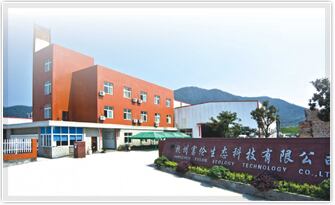The facility was founded in 1994, and is the first plant in China that recycles discarded beverage cartons and separates aluminium, composite paper and plastic packaging.
'It is worth taking the time for waste separation'

Mario Abreu, VP, Environment, Tetra Pak, told FoodProductionDaily, China is its largest market today, and its cartons are being increasingly recycled there, even though a lot remains to be done.
“Fulun has created a viable business of recycling our cartons replacing virgin fibre with recycled fibres into wallboard through to replacing virgin aluminium powder with recycled aluminium powder for fireworks,” he said.
“The challenge is we need to work with our partners to get the recycling infrastructure in place, we need to continue working on educating consumers that our packages are recyclable and that it is worth taking the time for waste separation.”
Abreu said Tetra Pak made further progress towards its 2020 environmental goals last year by launching the world’s first fully renewable carton package, the Tetra Rex Bio-based.
TwistCap OSO 34 bio-based opening
Made solely from paperboard and plant-based plastics, including the TwistCap OSO 34 bio-based opening, the package is currently being trialled by Finnish dairy producer Valio in retail outlets across the country.
It also introduced a number of food processing and packaging technologies to help customers reduce their own environmental impact, such as the Tetra Therm Aseptic Flex, high-acid juice pasteurization process saving up to 20% on energy consumption and an Environmental Benchmarking Service to assess the environmental performance of production operations.
“One of our key goals is the continued development of 100% renewable and recyclable packaging,” said Abreu.
“We were the world’s first to reach this milestone in the chilled liquid food sector with the launch of Tetra Rex Bio-based and our attention is now devoted to aseptic packaging. Aseptic, shelf stable, packaging is fundamentally more challenging due to the use of an aluminium layer.
“We want to find an effective and cost-competitive alternative to aluminium foil as a fully-protective barrier against light and oxygen to expand our packaging portfolio. We are making good progress, both in terms of developing the next-generation barrier and modifying existing filling machine technology to support new innovations.”
During 2014, the company delivered almost 44 billion FSC (Forest Stewardship Council) labelled packages to customers worldwide, 38% higher than in 2013 and Tetra Pak has produced more than 130 billion packages bearing the FSC logo since unveiling its first one in 2007.
CO2e emissions below its 2010 target threshold
Within its own operations, the company continues to keep CO2e emissions below its 2010 target threshold and in 2014, emissions were 1.5% lower than in 2010, while production levels were up 13%.
“We’re moving rapidly, we’ve been first to market with a range of innovations from FSC labelled packaging, bio-based caps and fully renewable packaging,” added Abreu.
“Nonetheless, the reality is that after more than 60 years in business, the easy improvements have already been made.
“This means that every new step requires additional time and investment, as we need to innovate more and take more risk, looking for new ways to blend environmental improvement with a competitive advantage for Tetra Pak and our customers.
“Given the fierce competition across the industry we need to remain cost-competitive and agile with every innovation.”
Abreu became the newly-appointed VP, of Environment for Tetra Pak in February this year.
He has been a member of Tetra Pak’s Global Environment management team since 2003 and joined Tetra Pak in 1999 in Canada.
